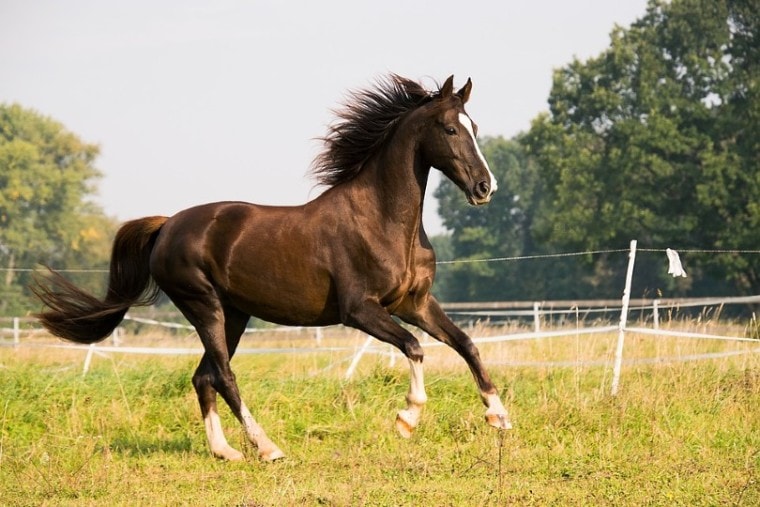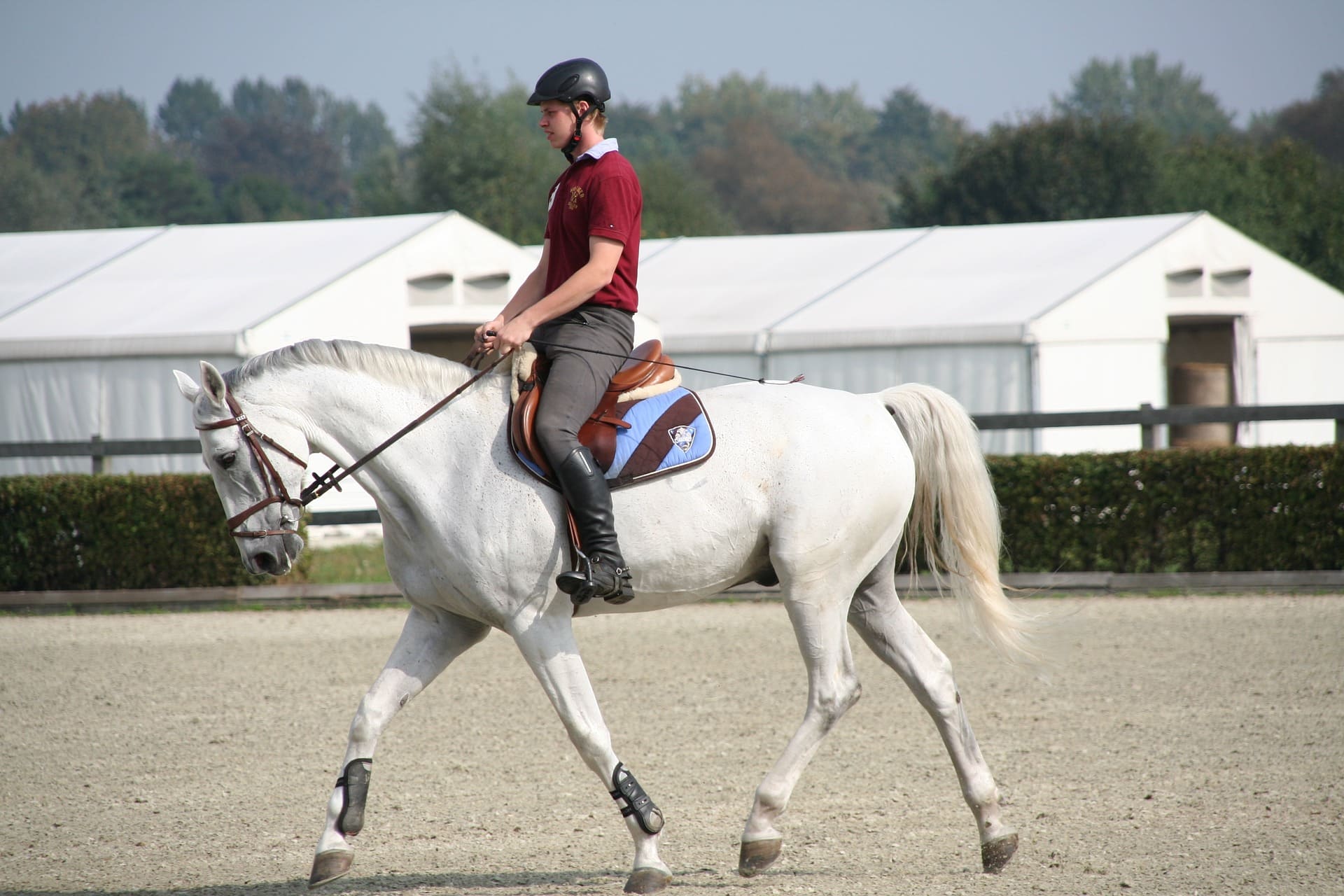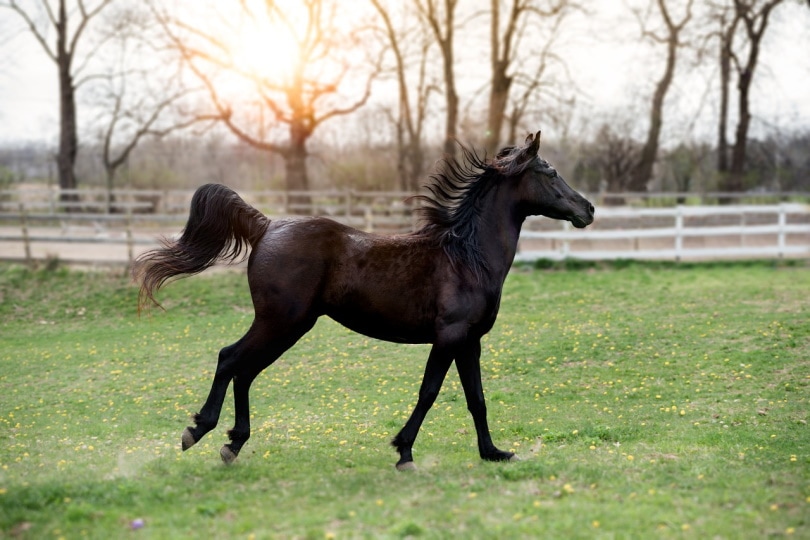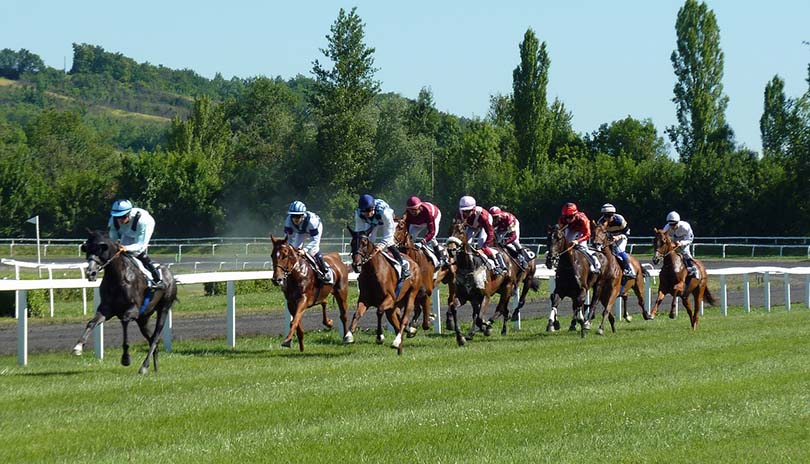
Horse racing is a wonderful sport. It’s exciting with elements of strategy, luck, and skill. However, there can be a lot to learn for someone new to the game, so we’ve decided to create a list of Equestrian competition facts to help you understand the game a little better. We’re confident that after you read over our list, you will know what is going on while you are watching a race or participating behind the scenes to become a jockey or breeder.
 The 35 Facts About Equestrian Competitions
The 35 Facts About Equestrian Competitions
Show Jumping

1. What is show jumping
In show jumping, a rider must ride a horse through a set course of jumps while being timed.
2. The types of jumps
There are several types of jumps, including the Crossrail jump, Liverpool jump, Hogsback jump, Triple Bar jump, and Oxer jump.
3. Not all horse breeds can jump
The best jumpers that you typically see in competitions are Thoroughbreds and Warmbloods.
Dressage

4. What is Dressage
Dressage competitions are about the horse’s obedience to the rider instead of its ability to jump or run fast.
5. The scope of competition
Horses must complete a course following the proper sequences, usually marked for the audience with a series of letters.
6. “Dancing on Horseback”
There can be a freestyle event called “Dancing on Horseback” in dressage competitions that has the rider dress up with tight pants, a coat, and a top hat to impress the audience with the horse’s graceful movements.
7. The training take years
Horses that compete in the Olympics Dressage competition must go through many years of training to prepare.
8. Six methods of Dressage
Dressage horses train on six methods: rhythm, relaxation, contact, impulsion, straightness, and collection.
9. Warmblood horses are more suitable
Warmblood horses are popular in dressage competitions, but you will also see Morgans, American Paint Horses, Andalusians, and others.
10. Who sets the rules
The Federation Equestre Internationale sets the rules for the Dressage test and competition.
Eventing

11. What is Eventing
Eventing is a complex event that combines Show Jumping, Dressage, and Cross Country Running into a single competition.
12. The origin of Eventing
Eventing is a competition based on old military tests of the cavalry.
13. What is the Cross-Country
The Cross-Country part of Eventing has the horse canter at high speed to jump over solid objects like walls, water, ditches, and logs.
14. The purpose of Cross-Country
The Cross-Country part of Eventing tests the horse’s strength and trust in its rider.
15. The ultimate test
Many breeders consider Eventing to be the ultimate test of a horse.
16. Competition can last for days
Some Eventing competitions can last as long as three days.
Hunter-Jumper

17. What is Hunter-Jumper competition
Hunter-Jumper competitions are unique in that judges do not look at the horse in any way, and different kinds of horses will compete against each other, including horses and ponies.
18. The rider’s ability is judged
Different horses can compete because the judge’s only concern is the riders’ ability to control the horse.
19. Ancient competition
The Hunter-Jumper competition dates back to the 1600s.
20. The purpose of Hunter-Jumper
Hunter-Jumper competitions were created to test the horse and rider’s ability to fox hunt, which required the rider to follow dogs through rough and unpredictable terrain.
21. What is judged
The Hunter-Jumper competition judges the rider on position and control of the horse.
22. Dress to Success
The way you dress will affect your score when competing in the Hunter-Jumper competitions.
Stock Work

23. What is a Stock Work competition
A Stock Work Competition judges the horse and rider on their ability to complete tasks common to a rancher. These tasks include calf roping, cattle penning, barrel racing, cutting, reining, and more.
24. They are common
Stock Work Competitions are common at fairs across the United States.
25. Stock Work helps to locate working horses
Stock Work competitions are good for locating horses that will work well in the fields.
Driving

26. What is a Driving competition
Driving is a competition that tests the horse’s ability to pull a wagon or cart and it’s judged how much weight it can pull and how far.
27. The purpose of Driving
During Driving Competitions, the rider will sit on the carriage to direct the hose.
28. Large horses are welcome
Diving horses are typically large breeds like the Clydesdale with big hooves that enable them to pull the heavy weight.
29. What is Harness racing
Harness racing is a similar competition that involves smaller horses and lighter carriages built for speed.
Racing

30. What is the Racing competition
Racing primarily tests the horse’s speed against other horses.
31. Most popular racing breed
The Thoroughbred is a popular horse for racing, but you will see other breeds as well.
32. What are Endurance races
Endurance races are similar to standard races, but they typically last a lot longer to test the horse’s endurance over time.
33. Who are the “Jockeys”
Jockeys are the name given to professional horse racers.
34. It dates back to 1900s
Horse racing first became popular in England in the early 1900s
35. Queen Elizabeth loved horse racing
Queen Elizabeth, the former Queen of England, played a large part in the popularity of horse racing that we enjoy today, and she continues to ride even at her advanced age.
 Summary
Summary
As you can see, there are many facts involved with horse competitions and a lot of rules to learn. We recommend focusing on one type of competition and learning everything you can about it before moving on to another to minimize the learning curve while maximizing enjoyment. Most people we talk to don’t realize learning such a complex sport could be so much fun, and in no time, you will know all of the rules and will be helping others.
We hope you have enjoyed reading over these facts and learned something new. If we have convinced you to get involved with horse racing, please share these 35 fascinating equestrian competition facts on Facebook and Twitter.
See also:
Featured Image Credit: RebeccasPictures, Pixabay

 The 35 Facts About Equestrian Competitions
The 35 Facts About Equestrian Competitions






